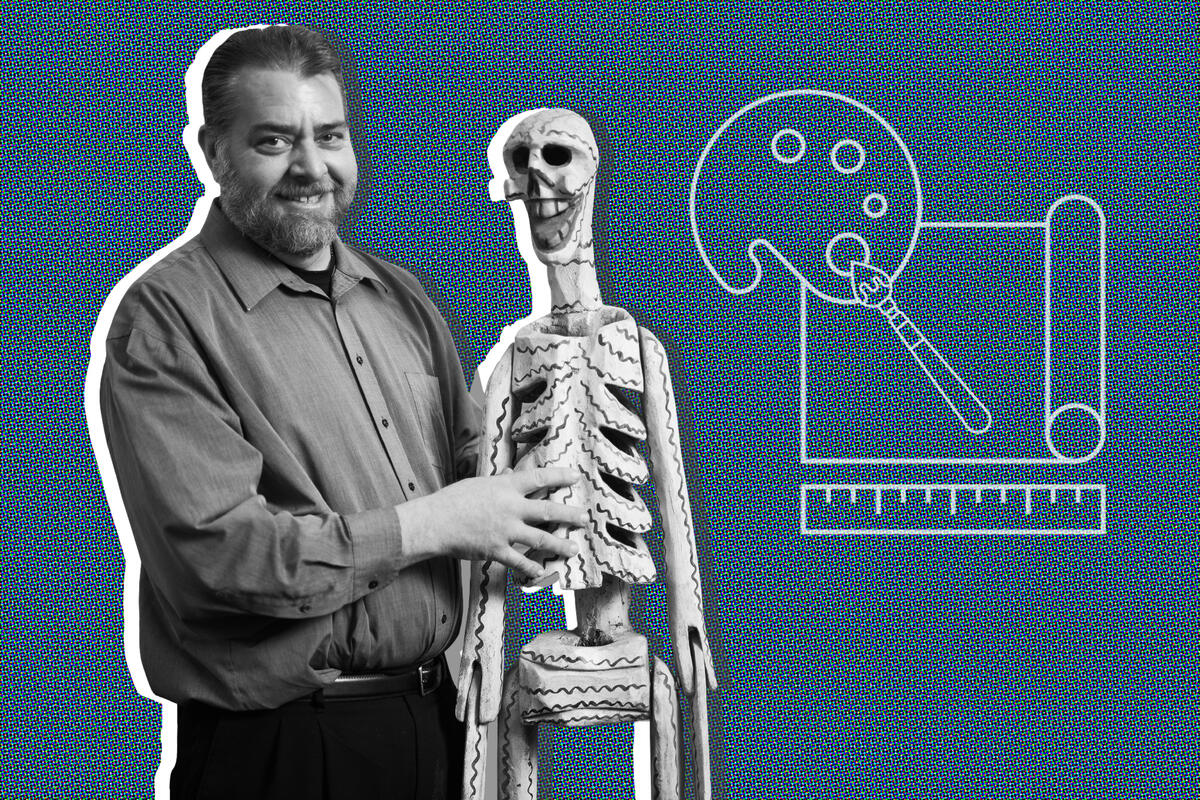Las Vegas is known as the Entertainment Capital of the world due to the rapid growth of entertainment venues along the Las Vegas Strip. And as the Strip has developed, so too has the need for new and emerging technologies.
Enter Michael Genova, College of Fine Arts coordinator for the entertainment engineering and design program (EED) — a nontraditional, interdisciplinary program with roots in theater, art, film, architecture, and the various engineering disciplines.
A joint effort between the College of Fine Arts and the Howard R. Hughes College of Engineering, the program helps EED students acquire hands-on experience when it comes to designing, building, installing, and maintaining the various facilities, equipment, and technologies used in today's entertainment industry.
Genova came to UNLV in 2006 as an MFA candidate in theatre, specialising in technical direction and scenic technology. He served in the new EED program as a graduate assistant and part-time instructor. With his MFA completed in 2009, he taught at both UNLV and CSN until becoming a professor-in-residence in 2015.
What work did you do prior to UNLV?
I have worked on hundreds of live events and have worn many hats over the years. Most of my early career I served as a technical director for theater and other live events. I loved the unique challenges that every production brought. I found my passion while I was employed at a company that specialized in theatrical artist flight and automation.
While at the company, I designed and built the flying rigs and machinery for huge productions like the Super Bowl and Broadway plays. I discovered a magical moment when the components of an engineered assembly were put together for the first time. Knowing every aspect of a machine's design, the forethought put into it, and all the small choices along the way reveal a less apparent beauty as the pieces come together.
What inspired you to get into your field?
I started my college experience as a music composition major, and I worked at a Performing Arts Center as a technical overhire. One of the first shows that I worked on was a professional touring version of The Velveteen Rabbit. The production’s scenic design and set were amazing. Designed to break apart, fold, and travel on a semitrailer, the set was laden trap doors and access ports for a team of puppeteers. I felt very fortunate to work with the production crew and to witness all that went into the storytelling backstage unseen by the audience. The production and the theatrical gadgetry sparked my interest in building, and so I made a gradual move into a theatre major, first working as a sound designer and composer, but later as a technical director and scene designer.
What is the biggest misconception about your job?
Entertainment engineering has its roots in live theater and many associate the practice with the work performed by stagehands. True that both may work alongside one another in the same venue, but they do not perform the same work. The emergence of entertainment engineering in Las Vegas was brought about by a need for higher skilled technicians and engineers to develop and install the advanced computer control systems used in entertainment today. Examples are computed controlled automation for live events, or the interactive real-time projected effects that have been recently introduced into many entertainment venues.
Is this what you thought you’d do when you grew up?
No, I can honestly say that I never imagined this would be my field of specialization.
What advice would you give your younger self?
When I was younger, I lacked direction, but I was fortunate enough to stumble into opportunities. I wouldn’t trade my experiences for the world. If I was to give my younger self advice, it would be to stumble more often.
Tell us about an object in your office and what it represents to you.
I keep a folder that belonged to my dad in my office. It is very old, and the cover usually grabs the attention of my students. My dad was a NASA engineer that worked on a number of projects during his career. The folder contains photos from the Mississippi test site of the Saturn S-II rocket engine and a congratulatory note from the director of operation for a job well done. My father supported me throughout my education and into my career. He loved Phantom of the Opera, and he loved to ask me questions about how the special effects were done. I suppose I keep the folder around for sentimental reasons.



